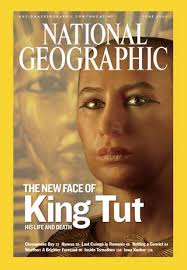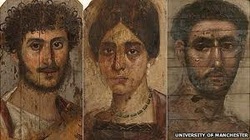The museum in Sweden will scan six mummies using a process called reality capture technology, where high-resolution 3D digital models can be made by compiling data from photos and X-ray scans.
 news.nationalgeographic.com
news.nationalgeographic.com Museum visitors will be able to explore the mummies as if they were archaeologists. Interactive visualization will make collections more accessible to other museums and researchers. The museum visitors will be able to zoom into very high resolution to see details like carving marks on a sarcophagus and artifacts buried with the body. They should gain a deeper understanding of the men and women inside the mummy wrappings.
In this way, the mummies will become strong mediators of knowledge from our past.
 www.bbc.co.uk
www.bbc.co.uk The portraits painted on to panels that covered the heads of mummies form part of an exhibition at the city's John Rylands Library. The panels, which have rarely been shown in public, were bequeathed to Manchester Museum by cotton magnate Jesse Haworth in 1921. Rather than traditionally Egyptian, they could be Greek or Roman.
Journey through the underworld
v When ancient Egyptians died, they believed they were setting off on a journey to the afterlife
v preserving the body through mummification would help them to travel there
v The soul would make a dangerous journey through the underworld and overcome demons using magic
v Once there, they would meet Osiris, lord of the underworld
v If Osiris judged them to be good, their soul would reunite with their body and they could live in paradise for eternity
Their beliefs were not so different to those of many religions today. In time, the shared technology will allow people around the world to explore this fascinating ancient culture. In the meantime, we can read books and use our imagination.

 RSS Feed
RSS Feed






